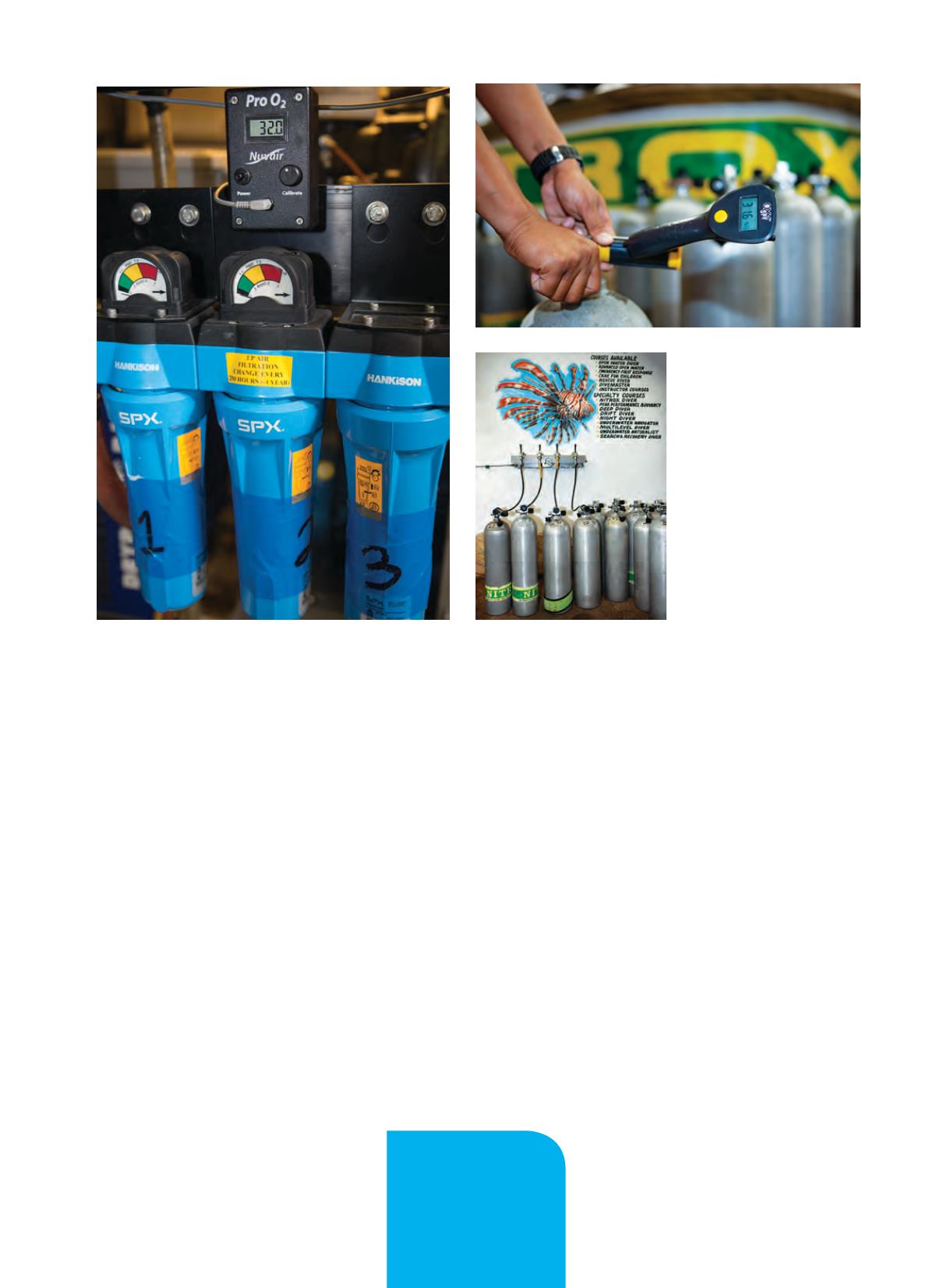

• A nitrox stick mixes oxygen with air in the intake
of the high-pressure compressor. This method also
warrants caution since pure oxygen must be used.
The oxygen is metered into the stick so that the end
product produced is the targeted percentage.
• A membrane system moves low-pressure air through a
membrane that pulls away nitrogen so that a mix that is
higher in oxygen remains. This desired gas is delivered
to the intake of the high-pressure compressor.
Regardless of the means of nitrox production, the
creation of nitrox is best left to diving professionals
for safety considerations. A nitrox course provides the
information necessary for understanding what mix to
use for diving at various depths.
To help ensure their air is safe, recreational divers
can do the following:
• Prior to using a compressed-air cylinder, carefully
open the valve slightly and check for any odors. If an
odor is present, do not use the cylinder. An odor may
indicate that the filtration system on the compressor
that purified the air is either past due
for servicing, has had a mechanical
failure, has drawn in harmful vapors or
has been contaminated by an autodrain
system failure.
• If the cylinder is filled with nitrox, analyze the
oxygen percentage prior to use to ensure that it
is as expected. Cylinders containing gases other
than air by law must be marked with the gas
they contain.
• Consider using a CO sensor or analyzer. CO-Pro
by Lawrence Factor, for example, is a quick,
effective and affordable way to check for the
presence of CO.
• Most important, find a high-pressure air source
you can trust. Some states (such as Florida) require
quarterly air testing. Ask the facility where you buy
your air what preventative maintenance practices
they follow. Most dive operations are proud of their
air and nitrox systems and would be happy to show
them off.
Compressing breathing air or nitrox into a scuba
cylinder is hard work — for both the compressor and
the technician operating the equipment. Vigilance and
regular maintenance are required to ensure that the air
produced is certifiable to the Compressed
Gas Association’s Grade E standards
for scuba. Play it safe by knowing your
source so you can feel confident about
the gases invading your body tissues.
AD
ALERTDIVER.COM|
109
For more tips and incident
reports, or to report a diving
incident, visit
DAN.org/diving-incidents
.
Divers can help ensure the
quality of their breathing gas by
smelling it, analyzing it, testing
it for CO and, perhaps most
important, getting it from a
reputable, trustworthy source.
STEPHEN FRINK
STEPHEN FRINK
STEPHEN FRINK
















